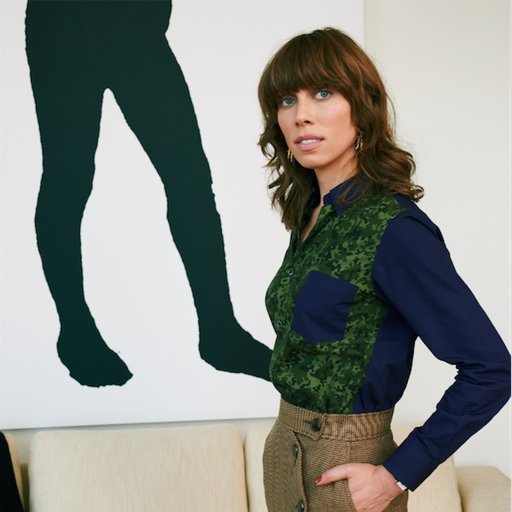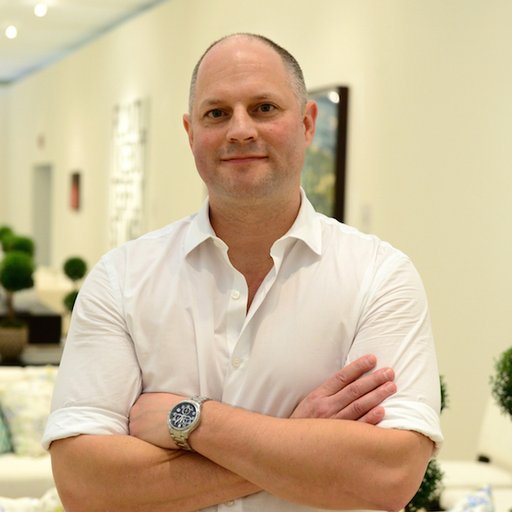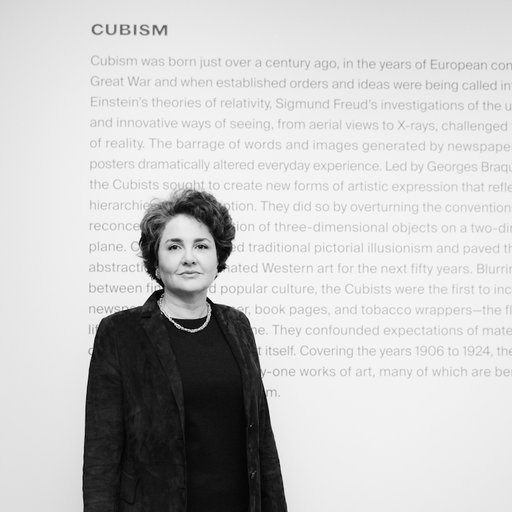The Guggenheim has just released details for the third phase of its innovative, collection-expanding partnership with the Swiss bank UBS. Through the Guggenheim UBS MAP Global Art Initiative—or just MAP, if you're in a rush—the museum has tapped outside curators to select works for acquisition from three regions: South and Southeast Asia, Latin America, and the Middle East and North Africa. Now the London-based curator, critic, and editor Sara Raza will be organizing the third installment, to be shown at the museum in 2016, following in the footsteps of the Singapore-based independent curator June Yap and the Mexico City-born writer and curator Pablo León de la Barra—all under the oversight of theGuggenheim's director of curatorial affairs, Joan Young.
Artspace sat down with Young to discuss the progress of MAP and its impact at home and abroad.
Is MAP the Guggenheim's first curatorial residency program?
Yes. We've had guest curators, but the MAP curators are doing more than guest curators. With acquisitions it’s a whole different process, working with our collections team and becoming involved with education. The curators are not only programming for New York; we're also bringing members of the education teams from the exhibitions’ touring venues to New York, to observe our programs and figure out what they want to pursue at their venues. Hopefully it will allow those institutions to experiment, because we’re covering the cost.
It’s been a very different sort of collaboration from the Guggenheim’s relationship with Deutsche Bank. What was the transition like from one partnership to the other?
They’re structured very differently. With Deutsche Bank, we had a gallery space together in Berlin and we were working mainly towards exhibitions for that space. The UBS Initiative is also having a different impact on the collection; we’re not commissioning works but pursing existing works, often by younger artists. We're also focused on exhibitions in New York and on touring those.
The regions covered by the UBS initiative are vast. How do the MAP curators go about defining them?
That was really their first mandate: how would they define the region on their own? We're not mandating that they do a comprehensive survey of the entire region, but it’s important for the curator to identify the themes and practices that they want to highlight. What the story is they want to tell about that region?
What is the process for selecting the curators?
We relied on our colleagues to recommend candidates. We had five or six advisers for each region, people who are either museum directors, academics, scholars, or curators themselves who would be aware of younger curators in the region.
After the learning curve of the first curatorial hire, was the process different for the second stage of the project? Will it be different for the third stage?
The only difference is that now we have some systems in place. But we’re inviting every curator to make their own mark, especially in terms of the exhibition, fresh ideas for education, or if they have new ways to engage other voices from the region. It’s been interesting to see the website evolve. We wanted to use it as a tool to create more relationships with the voices of the region, with other scholars, curators, and artists.
Has the selection process differed from show to show in any ways that are specific to those regions?
It’s was a little different with South and South East Asia, which doesn’t have as developed a gallery system. There were probably more purchases of acquisitions that were either from the artist directly or negotiated with the artist, rather than through galleries.
Even before UBS, the museum was acquiring a lot of South and Southeast Asian art under the Asian Art Initiative, which began in 2006 under curator Alexandra Munroe. Were there works that had eluded you then that you were able to acquire through this initiative?
There have been works by artists we have wanted to acquire, like Shilpa Gupta, Sheela Gowda, the Propeller Group, Navin Rawanchaikul, and the Otolith Group. June Yap also brought a lot of artists who were unfamiliar to me, and I think to Alexandra Munroe too.
There was a travel component to the phase two of the MAP Initative, and the project’s curator, Pablo León de la Barra, sent dispatches from the road. How did this come about?
The MAP Inititive doesn’t start with the exhibition opening as most exhibitions do, because the acquisition process starts way in advance. We wanted to be able to share that process as well, so we talked to Pablo about that. He already had a blog, he already had an Instagram account, and he’s already shooting pictures when he travels. We did something different for phase one, with South and Southeast Asia; June convened a roundtable of experts, curators, critics, professors, and artists from the region, in Bangkok in November 2012, to discuss the themes and issues she was considering.
Phase Two of MAP also included many food-based works, like Allora & Calzadilla's Sweat Glands, Sweat Lands, Damián Ortega's Tortillas Construction Module, andGabriel Sierra's Hang It All. Was this a conscious curatorial decision?
It actually evolved out of phase one, where none of the works we acquired dealt directly with food, but on one of our Perspectives blogs we had posted a wonderful video about street food by the artist Roslisham Ismail, and we got a great response to it on the website. Food is something that is easily understandable, and applicable, to everyone. Especially if we are talking about a New York audience, they may be less familiar with the art from these regions but they may be familiar with the food.
There were also a number of participatory works.
That is something that Pablo and I had wanted to highlight. He talked about participatory work in Brazil, with artists like Hélio Oiticica and Lygia Clark, as a response to the military dictatorship and the censorship of visual arts in general. With these participatory pieces, performative pieces, and ephemeral pieces artists were able to express things they couldn’t on canvas or in sculpture. While it was challenging to acquire performances pieces, at least we represented some of that practice. We did acquire one performance work in phase two: Tania Bruguera’s Talin’s Whisper #6 (Havana Version). It’s a video of an original performance she did in Cuba for the Havana Biennial. We’re also acquiring the right to re-enact this performance and are working with her to do so during the tour of the exhibition.
The next region, Middle East & North Africa, covers a part of the world in which the Guggenheim is building a museum. Will this be part of the equation as the next curator select works for acquisition?
The curator, Sara Raza, will work with the curatorial team from Abu Dhabi and be thinking about the Abu Dhabi collection in concert with the collection in New York. It will be a rich dialogue. But at the same time, we were speaking with Reem [Fadda, associate curator of Middle Eastern art for the Guggenheim's Abu Dhabi Project] about this and realized: we’re going to be rivals! Galleries are going to try to play us off each other! More than that, Reem said that it will be an opportunity for artists and works that they don’t feel are appropriate for their institution to be considered for acquisition in New York.
Where do you think MAP has made the biggest impact?
Education is at the heart of the project. Asia Society Hong Kong Center and the Centre for Contemporary Art in Singapore are both very young institutions, and we were able to bring some of our programs to them and they were able to adapt them for their purposes, like working with the visually impaired. Brazil’s museum education is great—they have a tradition of working with school groups and with disabled audiences. I keep thinking we’re going to learn more from them than they will from us.
























